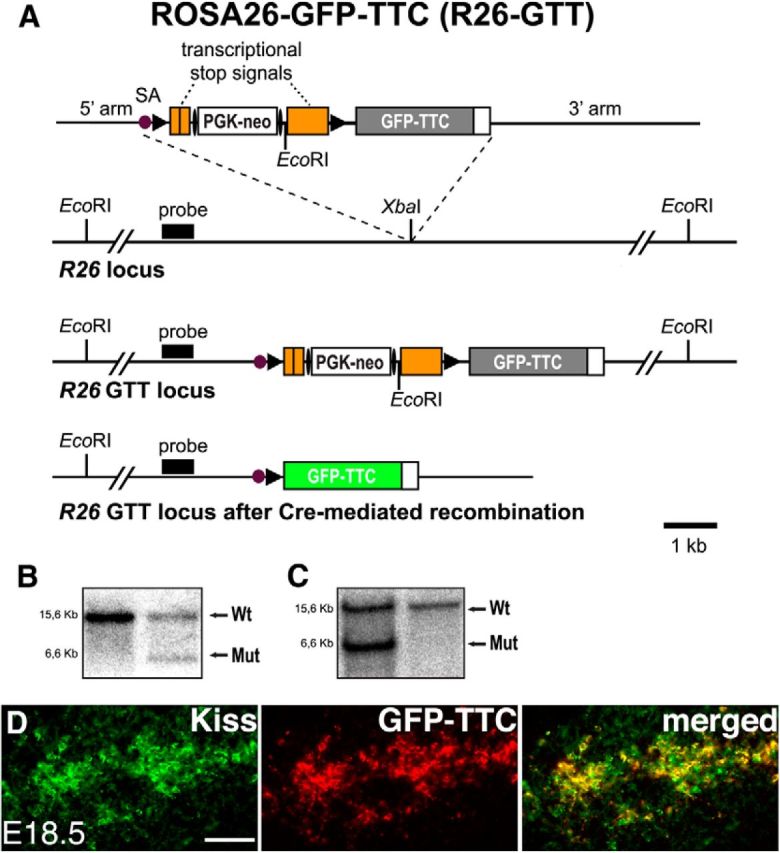Figure 5.

Targeted integration of a Cre-dependent GFP-TTC transneuronal tracer into the R26 locus. A, Schematic representation of the targeting strategy. From top to bottom: the targeting vector, the wild-type R26 allele, and the targeted R26 allele before and after Cre-mediated recombination are shown. The targeting vector contains a loxP-flanked transcriptional stop cassette with a FRT-flanked phosphoglycerate kinase promoter-driven neomycin resistance gene (PGK-neo), and the coding sequence for GFP-TTC. LoxP and FRT sites are indicated by solid arrowheads and ellipses, respectively. SA, Adenovirus splice acceptor sequence. B, Southern blot analysis of genomic ES cell DNA. The expected fragment sizes detected by the probe are indicated (wild-type, 15.6 kb; mutant, 6.6 kb). C, Germline transmission of the R26-GTT allele was confirmed by Southern blot analysis of tail DNA. D, Antibodies against kisspeptin demonstrate faithful activation of GFP-TTC in kisspeptin neurons. Scale bar, 50 μm. Kiss, Kisspeptin; Wt, wild type; Mut, mutant.
